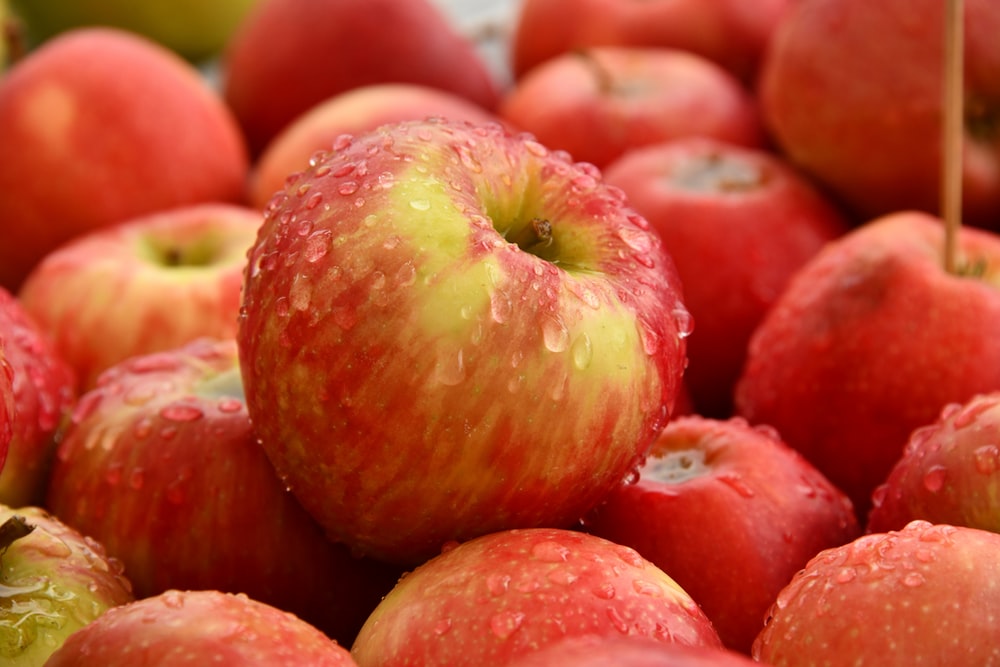A Guide to Choosing the Best Apple for Preserving
go.ncsu.edu/readext?731195
en Español / em Português
El inglés es el idioma de control de esta página. En la medida en que haya algún conflicto entre la traducción al inglés y la traducción, el inglés prevalece.
Al hacer clic en el enlace de traducción se activa un servicio de traducción gratuito para convertir la página al español. Al igual que con cualquier traducción por Internet, la conversión no es sensible al contexto y puede que no traduzca el texto en su significado original. NC State Extension no garantiza la exactitud del texto traducido. Por favor, tenga en cuenta que algunas aplicaciones y/o servicios pueden no funcionar como se espera cuando se traducen.
Português
Inglês é o idioma de controle desta página. Na medida que haja algum conflito entre o texto original em Inglês e a tradução, o Inglês prevalece.
Ao clicar no link de tradução, um serviço gratuito de tradução será ativado para converter a página para o Português. Como em qualquer tradução pela internet, a conversão não é sensivel ao contexto e pode não ocorrer a tradução para o significado orginal. O serviço de Extensão da Carolina do Norte (NC State Extension) não garante a exatidão do texto traduzido. Por favor, observe que algumas funções ou serviços podem não funcionar como esperado após a tradução.
English
English is the controlling language of this page. To the extent there is any conflict between the English text and the translation, English controls.
Clicking on the translation link activates a free translation service to convert the page to Spanish. As with any Internet translation, the conversion is not context-sensitive and may not translate the text to its original meaning. NC State Extension does not guarantee the accuracy of the translated text. Please note that some applications and/or services may not function as expected when translated.
Collapse ▲Fall is in the air! Shorter days, cool, crisp mornings, and APPLES. Local orchards are  bustling with folks wanting the freshest, sweetest (or tartest) apples to snack on, cook with, and preserve. From homemade applesauce to apple butter to dried apple chips, apples are one of the most versatile fruits for preserving. There are thousands of apple varieties around the world and over 100 varieties grown in the United States. Each apple variety has its own unique flavor, texture, color, and cooking properties. Knowing the best apple to choose is key to preserving a quality product. Here is a guide for choosing the best apple.
bustling with folks wanting the freshest, sweetest (or tartest) apples to snack on, cook with, and preserve. From homemade applesauce to apple butter to dried apple chips, apples are one of the most versatile fruits for preserving. There are thousands of apple varieties around the world and over 100 varieties grown in the United States. Each apple variety has its own unique flavor, texture, color, and cooking properties. Knowing the best apple to choose is key to preserving a quality product. Here is a guide for choosing the best apple.
Applesauce – Select apples that are sweet, juicy, and crisp such as Golden Delicious, Pink Lady, Gala, Honeycrisp, and Ambrosia. For a tart flavor, add 1 to 2 pounds of tart apples, such as Granny Smith, McIntosh, Jonagold, or Winesap to every 3 lbs of sweeter fruit.
Apple Jelly – Choose really sweet varieties such as Fuji, Gala, or Ambrosia.
Apple Jam – The best apples for jam will encompass a variety of flavors. Try mixing sweet and tart varieties such as Pink Lady and Granny Smith.
Apple Butter – Because the cooking process is slow, select apples with a softer flesh such as Red Delicious, Golden Delicious, Fuji, Gala, Braeburn, and McIntosh.
Apples for Freezing – Select sweet varieties that are hardy with a strong texture such as Jonagold, Golden Delicious, Cortland, and Empire.
Apples for Dehydrating – Choose sweet, firm texture such as Gala, Fuji, Golden Delicious, and Honeycrisp. If you prefer less sweetness, choose Granny Smith, Cameo, or Winesap. Of course, this is only a guide. It is perfectly fine to mix and match apples of different flavors and textures. It’s all about personal choice and what your taste buds prefer! Regardless, there is an abundance of apple varieties grown right here in North Carolina! Visit a local orchard today to pick your favorites.



